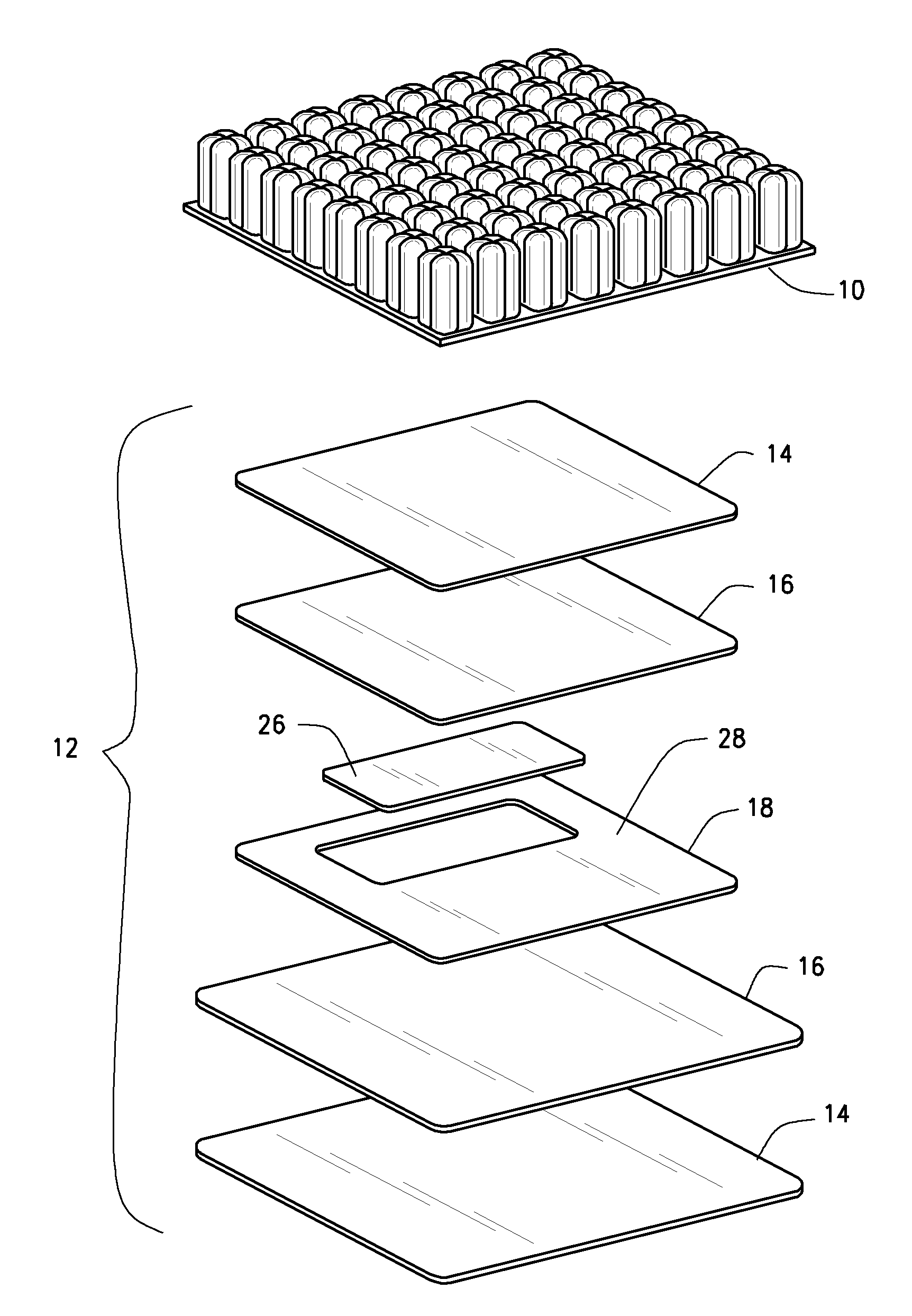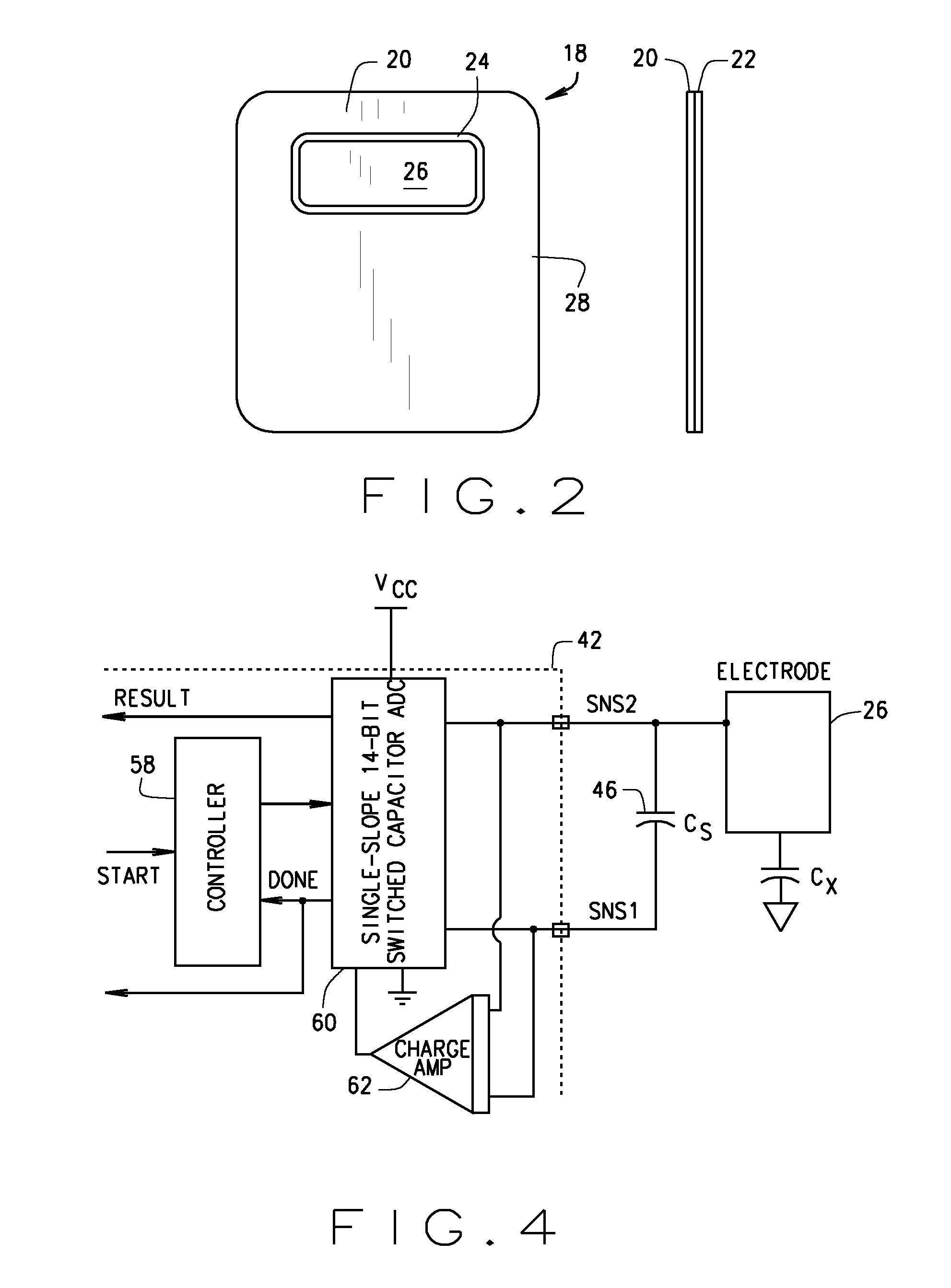Proximity sensor
a sensor and proximity technology, applied in the field of proximity sensors, can solve the problems of inability to use detectors to detect relative or actual distances, unduly complex sensors in electronic implementation and in sensor construction, and achieve the effect of measuring capacitan
- Summary
- Abstract
- Description
- Claims
- Application Information
AI Technical Summary
Benefits of technology
Problems solved by technology
Method used
Image
Examples
Embodiment Construction
[0025]While this invention is susceptible of embodiment in many different forms, there is shown in the drawings and will herein be described in detail preferred embodiments of the invention with the understanding that the present disclosure is to be considered as an exemplification of the principles of the invention and is not intended to limit the broad aspect of the invention to the embodiments illustrated.
[0026]The preferred embodiment of the present invention is a proximity sensor that utilizes charge transfer measuring technology and large-area capacitive sheets to determine the distance of an object from the capacitive sheet. The charge transfer measurement is employed with a short, low duty cycle burst of power. Burst mode permits power consumption in the low microamp range, thereby dramatically reduces radio frequency (RF) emissions, lowers susceptibility to electromagnetic interference (EMI), and yet permits excellent response time. Internally, it is preferred that the sign...
PUM
 Login to View More
Login to View More Abstract
Description
Claims
Application Information
 Login to View More
Login to View More - R&D
- Intellectual Property
- Life Sciences
- Materials
- Tech Scout
- Unparalleled Data Quality
- Higher Quality Content
- 60% Fewer Hallucinations
Browse by: Latest US Patents, China's latest patents, Technical Efficacy Thesaurus, Application Domain, Technology Topic, Popular Technical Reports.
© 2025 PatSnap. All rights reserved.Legal|Privacy policy|Modern Slavery Act Transparency Statement|Sitemap|About US| Contact US: help@patsnap.com



